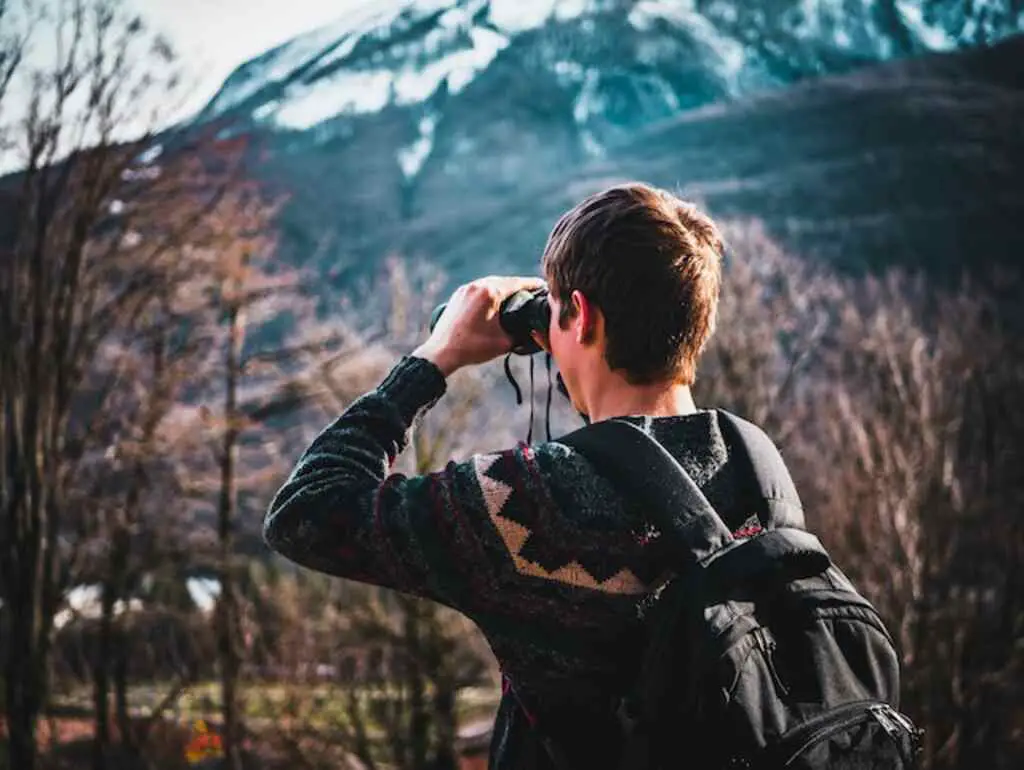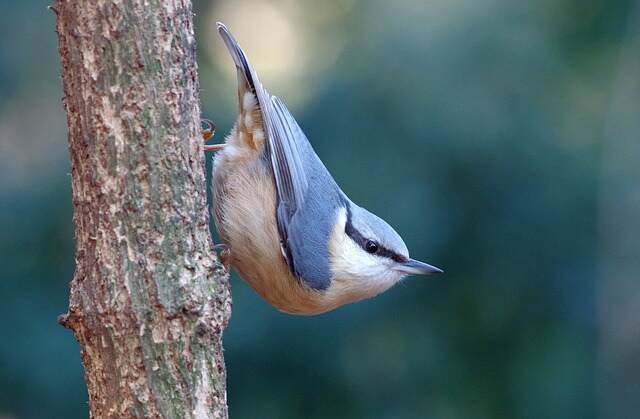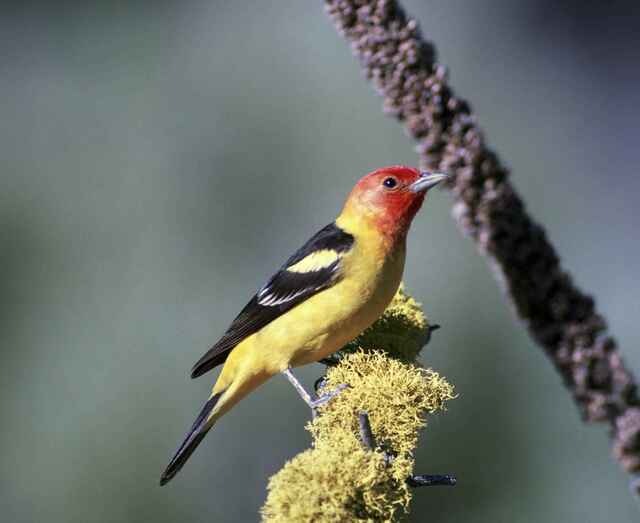Birding, also known as bird watching or birding, is a fascinating hobby that involves observing and studying birds in their natural habitat. As a birder, you’ll learn to identify different bird species, appreciate their unique characteristics, and understand their behavior.
Birding is more than just a casual activity; it’s a passion for many enthusiasts who enjoy exploring different locations to observe a great variety of bird species. It’s also a fantastic way to connect with nature, learn about the environment, and contribute to bird conservation efforts.
If you’re new to birding, it can be overwhelming to know where to start. That’s why we’ve put together a comprehensive guide to help you discover the joy of birding and get started on your journey as a birder.
Table of Contents
- 1 Key Takeaways:
- 2 What is Birding?
- 3 The Essence of Birding
- 4 Bird Migration: A Marvelous Phenomenon
- 5 Getting Started in Birding
- 6 Essential Birding Equipment
- 7 Identifying Bird Species
- 8 Exploring Birding Locations
- 9 Connecting with Birding Enthusiasts
- 10 Birding Ethics and Conservation
- 11 Enhancing Your Birding Experience
- 12 Documenting and Sharing Your Birding Journey
- 13 Conclusion
- 14 FAQs About Birding
- 14.1 How do I get started in birding?
- 14.2 What equipment do I need for birding?
- 14.3 How do I identify bird species?
- 14.4 Where can I find diverse bird species for birding?
- 14.5 How can I connect with other birding enthusiasts?
- 14.6 What are some birding tips for beginners?
- 14.7 How can I contribute to bird conservation through birding?
- 14.8 How can I enhance my birding experience?
- 15 Author
Key Takeaways:
- Birding is the activity of observing and studying birds in their natural habitat
- It involves identifying different bird species, understanding their behavior, and appreciating their unique characteristics
- Birding is a fantastic way to connect with nature, learn about the environment, and contribute to bird conservation efforts
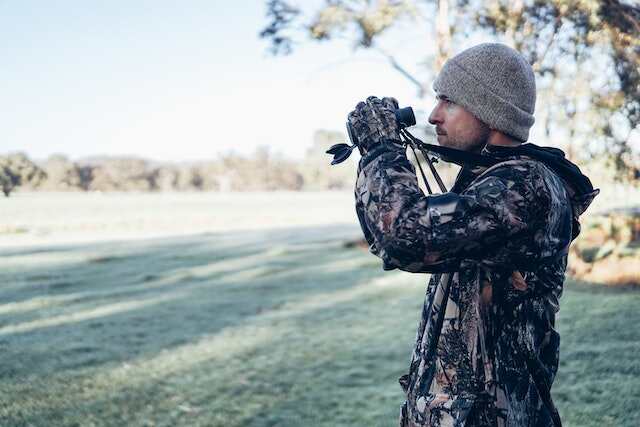
What is Birding?
Birding, also known as birdwatching, is a recreational activity that involves observing and identifying birds in their natural habitat. Birders typically use binoculars, spotting scopes, and field guides to help them identify different bird species. The goal of birding is to observe and appreciate the beauty and diversity of birds, as well as to learn about their behavior, habitat, and migration patterns.
Birding can be done in any outdoor setting, from urban parks to remote wilderness areas, and is enjoyed by people of all ages and backgrounds. Many birders also participate in citizen science projects, such as bird counts and surveys, to help monitor bird populations and contribute to conservation efforts.
The Essence of Birding
Birding is an activity that involves observing and studying birds in their natural habitats. It is much more than mere bird watching, as it involves identifying different bird species, understanding their behavior, and appreciating their unique characteristics.
Identifying bird species is one of the primary aspects of birding. This can be achieved through observation of bird physical features, behavior patterns, and bird calls. With time and practice, bird identification becomes easier and more enjoyable.
Birding allows enthusiasts to experience a range of bird species, including migratory birds. Observing the remarkable phenomenon of bird migration is an awe-inspiring experience that many birders enjoy. Whether it is watching Sandhill Cranes fly south to warmer climates or watching songbirds flying north to breeding grounds, bird migration is a marvel to watch.
Birding also allows enthusiasts to appreciate the unique characteristics and beauty of different bird species. From the colors of the painted bunting to the unique dance of the sandhill crane, each bird species has its unique traits that make them stand out.
Overall, birding is an enriching activity that allows enthusiasts to connect with nature, learn about different bird species, and appreciate their unique characteristics.
Bird Migration: A Marvelous Phenomenon
Bird migration is one of the most remarkable journeys in the animal kingdom. Across the world, millions of birds undertake long-distance movements every year in response to changes in the seasons and the availability of resources.
Migration patterns1 vary by bird species, with some traveling thousands of miles across oceans and continents. For example, the Arctic Tern journeys from the Arctic to the Antarctic and back again, covering up to 44,000 miles in a single year. The Bar-tailed Godwit travels from Alaska to New Zealand, a distance of over 7,000 miles.
While migration is driven by a range of factors, including changes in temperature and daylight hours, the ultimate goal is to find ideal breeding grounds and sources of food. By traveling vast distances, birds can access new habitats and resources that would otherwise not be available to them.
As birders, observing migration can be a thrilling and inspiring experience. By understanding the patterns and behaviors of different bird species, we can anticipate their movements and plan our outings to witness these incredible journeys up close.
Getting Started in Birding
If you’re new to birding, there are a few essential tips to help you get started. First and foremost, make sure to invest in a good pair of binoculars. These will allow you to observe birds up close and in detail, without disturbing or startling them. Look for binoculars with good magnification and a clear, sharp image.
Next, acquire a field guide to bird identification. A field guide will help you identify different bird species based on their physical features, behavior, and habitat. Consider using a guidebook specific to your region, as this will feature the most common bird species in your area.
As a beginner, it’s important to start with simple bird species that are easy to identify. Focus on birds that are frequently seen in your area and take note of their distinctive markings and behaviors. It’s also helpful to learn about bird vocalizations and calls, as these can often be heard before a bird is seen.
When it comes to finding birds, start by visiting local parks and nature reserves. These areas are often rich in bird life and offer a great opportunity to observe and identify different species. Consider joining a birding group or club, where you can learn from experienced birders and gain access to local birding hotspots.
Finally, be patient and persistent. Birding is a skill that takes time and practice to develop. Keep a notebook or logbook to record your observations and sightings and continue to learn about different bird species and their behaviors. With time and dedication, you will become a skilled and enthusiastic birder!
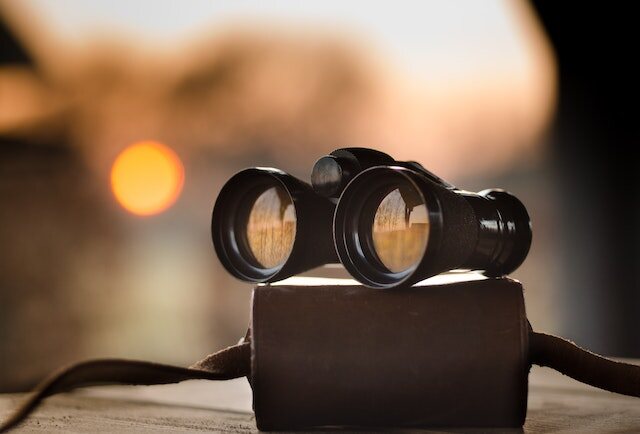
Essential Birding Equipment
As a birder, having the right equipment is critical to enhancing your birding experience. Here are some essential tools to consider:
| Equipment | Description |
|---|---|
| Binoculars | Invest in a good pair of binoculars with a magnification of at least 8x to 10x. This will allow you to see details of birds that may be far away or difficult to spot. |
| Field Guide | Carry a field guide with detailed information about the birds in your area, including their physical characteristics, habitat, behavior, and calls. |
| Notebook | Keeping a notebook to record your observations is a crucial part of birding. Jot down the date, location, weather conditions, and any notable details about the birds you’ve seen. |
| Clothing and Footwear | Wear comfortable, weather-appropriate clothing and sturdy footwear for outdoor birding activities. Dressing in layers is recommended to adjust to temperature changes. |
| Camera | A camera can be a useful tool for documenting your sightings or helping with identification later on. Consider investing in a telephoto lens for capturing high-quality bird photos. |
While you can certainly start birding with just a pair of binoculars and a field guide, having additional equipment can make your experience more enjoyable and successful. Here are some additional birding tips:
- Always carry a fully charged phone or portable charger for emergencies and for accessing birding apps.
- Consider using a tripod or monopod to stabilize your binoculars or camera for clearer viewing.
- Learn how to properly clean and maintain your equipment to ensure it lasts longer and remains in top condition.
Investing in high-quality equipment can be expensive, but it’s worth it in the long run. Take the time to research and compare different brands and models to find the best fit for your needs and budget. With the right tools and techniques, you’ll be able to spot and identify birds like a pro!
Identifying Bird Species
Bird identification is a crucial aspect of birding. It involves learning to differentiate between various bird species, including their physical features, behavior patterns, and calls. Here are some birding tips to help sharpen your identification skills:
- Begin by observing birds in your local area. Familiarize yourself with common species before moving on to less common ones.
- Study bird field guides and use them to identify birds based on their physical characteristics, such as size, shape, color, and markings.
- Pay attention to the behavior and habits of birds. For example, some species may forage on the ground, while others may fly in a particular pattern.
- Listen carefully to bird calls and songs. Learning to identify the different sounds birds make can help you identify them even if you can’t see them.
- Attend birding events or join birding clubs to learn from experienced birders. They can offer valuable insights on identifying birds and share their own tips and tricks.
Remember, identifying bird species takes practice. Don’t be discouraged if you struggle at first. Keep observing birds and learning about their characteristics, and before you know it, you’ll be identifying species with ease.
Exploring Birding Locations
Part of the joy of birding is discovering new locations to explore and observe different bird species. Here are some tips for finding the best birding locations:
- Research online or check with local birding clubs or organizations for recommended spots.
- Visit national parks, wildlife refuges, and nature centers.
- Explore local parks, nature trails, and bodies of water, such as lakes, rivers, and oceans.
- Consider the time of year and season for optimal birding opportunities.
Once you’ve found a location, here are some tips for making the most of your visit:
- Arrive early in the morning or late in the afternoon when birds are most active.
- Stay quiet and still to avoid scaring off birds.
- Bring binoculars and a field guide to assist with bird identification.
- Observe bird behavior and take note of any unique characteristics.
Remember to always respect the habitat and follow ethical birding practices to ensure the birds’ safety and well-being.
Connecting with Birding Enthusiasts
Birding is not only a fun hobby, but it also provides an opportunity to connect with like-minded individuals who share the same passion for birds. Whether you’re looking to exchange tips, share experiences, or simply socialize, there are various ways to meet other birding enthusiasts.
One way is to join a local birding club or organization. You can find groups in your area by conducting a quick online search or checking with your local Audubon Society. These clubs offer regular birding outings, meetings, and educational events that can help you expand your knowledge and network with other birders.
You can also attend birding festivals and events. Many communities host birding festivals throughout the year, which can be a great way to meet birding enthusiasts from different regions. These events often feature guided birding tours, birding workshops, and presentations from experts in the field.
Another option is to participate in citizen science initiatives or volunteer for conservation efforts. These activities not only allow you to make a meaningful contribution to bird conservation but also provide opportunities to meet other birding enthusiasts who share your interests.
Additionally, social media platforms like Facebook, Twitter, and Instagram offer birding groups and pages where you can connect with other birders, share photos, and exchange tips and experiences.
Overall, connecting with other birding enthusiasts can enhance your birding experience and deepen your appreciation for these remarkable creatures. So don’t be afraid to reach out and join this vibrant community!
Birding Ethics and Conservation
Birding is not just a hobby, it’s a responsibility. As birding enthusiasts, we have a duty to contribute to bird conservation and habitat preservation. Here are some ethical guidelines to follow:
- Respect birds’ space: Keep a safe distance from nesting sites and avoid disturbing birds during breeding season.
- Leave no trace: Pack out what you pack in, and don’t disturb or damage fragile habitats during your birding adventures.
- Advocate for bird conservation: Join local or national birding organizations to show your support for issues affecting birds and their habitats.
- Share your knowledge: Educate others about the importance of bird conservation, and encourage them to take action to protect our feathered friends.
By following these ethics and promoting bird conservation, we can ensure that future generations will have the opportunity to appreciate and enjoy these magnificent creatures.
Enhancing Your Birding Experience
As you continue your birding journey, there are several tips and tricks you can utilize to enhance your experience.
Learn to Read Bird Behavior
Observing bird behavior can provide valuable insights into their world. Understanding how they move, communicate, and interact can help you identify species and predict their next move. For example, watching a bird’s body language can indicate whether it’s searching for food or displaying aggression towards other birds.
Time Your Birding Outings Strategically
Timing is essential in birding. The best time to view birds is usually early morning or late afternoon when they’re most active. You can also plan your birding outings around certain seasons or weather patterns. For instance, migratory birds are best observed during their seasonal movements.
Bring a Field Guide and Notebook
A field guide is an essential tool for identifying birds. It provides key information on each species’ physical and behavioral characteristics. Additionally, bringing a notebook allows you to record observations and keep track of the birds you’ve seen.
Join a Birding Club or Group
Connecting with other birding enthusiasts can offer valuable insights and new perspectives. Joining a birding club or group provides opportunities for shared experiences, learning, and community engagement.
Participate in Citizen Science Initiatives
Citizen science initiatives involve ordinary people contributing to scientific research by reporting bird sightings and participating in bird counts. Participating in such initiatives is a valuable way to contribute to bird conservation efforts and learn more about birds.
Practice Patience and Persistence
Birding requires patience and persistence. It’s essential to remain calm, still, and quiet to avoid disturbing the birds. Additionally, being persistent and consistently returning to a location can increase your chances of spotting new and interesting species.
Experiment with Photography
Photography is a great way to capture and share your birding experiences. Experimenting with different camera settings and techniques can help you capture stunning images of birds in their natural habitats.
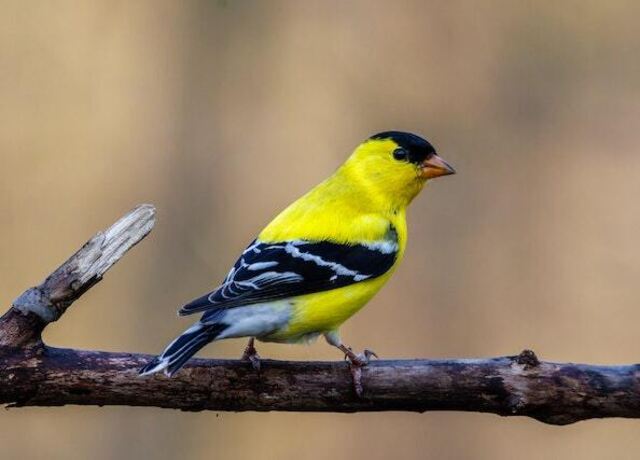
Documenting and Sharing Your Birding Journey
One of the most rewarding aspects of birding is documenting and sharing your experiences with others. Not only does it allow you to relive your sightings, but it can also inspire others to take an interest in birds and conservation efforts. Here are some tips for documenting and sharing your birding journey:
Create a Birding Journal
A birding journal is a great way to record your sightings, observations, and thoughts about your birding experiences. You can include the date, location, and weather conditions, as well as any notable behaviors or characteristics you observed. You can also sketch or paint the birds you saw and include photographs if you like.
Utilize Digital Platforms
There are many digital tools available for documenting and sharing your birding experiences. You can use apps like eBird or iNaturalist to record your sightings and contribute to citizen science efforts. You can also share your photos and observations on social media platforms like Instagram or Facebook, using appropriate hashtags to connect with other birding enthusiasts.
Join a Birding Club or Organization
Joining a birding club or organization is a great way to connect with other birding enthusiasts and share your experiences. Many clubs offer regular birding outings and events, which provide opportunities to learn from experienced birders and discover new locations. You can also contribute to club projects and initiatives that promote birding and conservation efforts.
Participate in Citizen Science Projects
By participating in citizen science projects, you can contribute valuable data to research efforts and help protect bird populations. Projects like the Christmas Bird Count or the Great Backyard Bird Count rely on volunteer birders to observe and record data on bird populations. You can also participate in bird banding programs or habitat restoration projects to further contribute to conservation efforts.
By documenting and sharing your birding journey, you can inspire others to appreciate and protect birds and their habitats. Remember to respect the birds and their space, and always follow ethical birding practices.
Conclusion
Birding is an exciting and rewarding activity that allows enthusiasts to connect with nature and appreciate the beauty of different bird species. Through studying bird behavior, identifying bird species, and appreciating their unique characteristics, birding offers endless opportunities for discovery and joy. Whether you’re a beginner or an experienced bird watcher, there are always new and exciting things to learn about birding.
If you’re interested in getting started with birding, there are plenty of resources available to help you on your journey. From joining birding clubs or organizations to participating in events and workshops, there are many ways to connect with other birding enthusiasts and learn from their experiences. Additionally, making use of essential birding equipment such as binoculars and field guides can help you to fully immerse yourself in the activity.
As you embark on your birding journey, it’s important to remember the ethical considerations and contribute to bird conservation efforts. By preserving habitats, respecting birds’ space, and advocating for their protection, we can help to ensure that future generations can continue to enjoy the incredible world of birding.
What is birding?
Birding is the activity of observing and studying birds in their natural habitat. It involves identifying different bird species, understanding their behavior, and appreciating their unique characteristics. Birding offers endless opportunities for discovery and joy, and allows enthusiasts to connect with nature and appreciate the beauty of different bird species.

FAQs About Birding
How do I get started in birding?
To get started in birding, you can begin by acquiring essential equipment such as binoculars and field guides. Finding the right locations and connecting with birding enthusiasts can also enhance your experience.
What equipment do I need for birding?
Essential equipment for birding includes binoculars, field guides, and a notebook for recording observations. These tools will help you fully immerse yourself in the activity and enhance your birding experience.
How do I identify bird species?
Bird identification involves studying physical features, behavior patterns, and bird calls. By observing and comparing these characteristics, you can learn to identify different bird species.
Where can I find diverse bird species for birding?
There are various birding locations to explore, from local parks to national wildlife refuges. These places offer opportunities to encounter diverse bird species and make the most of your birding outings.
How can I connect with other birding enthusiasts?
You can connect with fellow birders by joining birding clubs or organizations and participating in events dedicated to birding. These communities provide a platform to share experiences and learn from one another.
What are some birding tips for beginners?
For beginners, it’s helpful to learn to read bird behavior, research birding locations, and explore different identification techniques. Additionally, timing your birding outings strategically can increase your chances of observing specific bird species.
How can I contribute to bird conservation through birding?
Responsible birding involves following ethical practices, preserving habitats, and advocating for bird protection. By respecting birds’ space and supporting conservation efforts, you can contribute to the well-being of bird species.
How can I enhance my birding experience?
To enhance your birding experience, you can learn about bird behavior, improve your identification skills, and document your sightings. Additionally, utilizing digital platforms and sharing your experiences can inspire others and contribute to citizen science initiatives.

